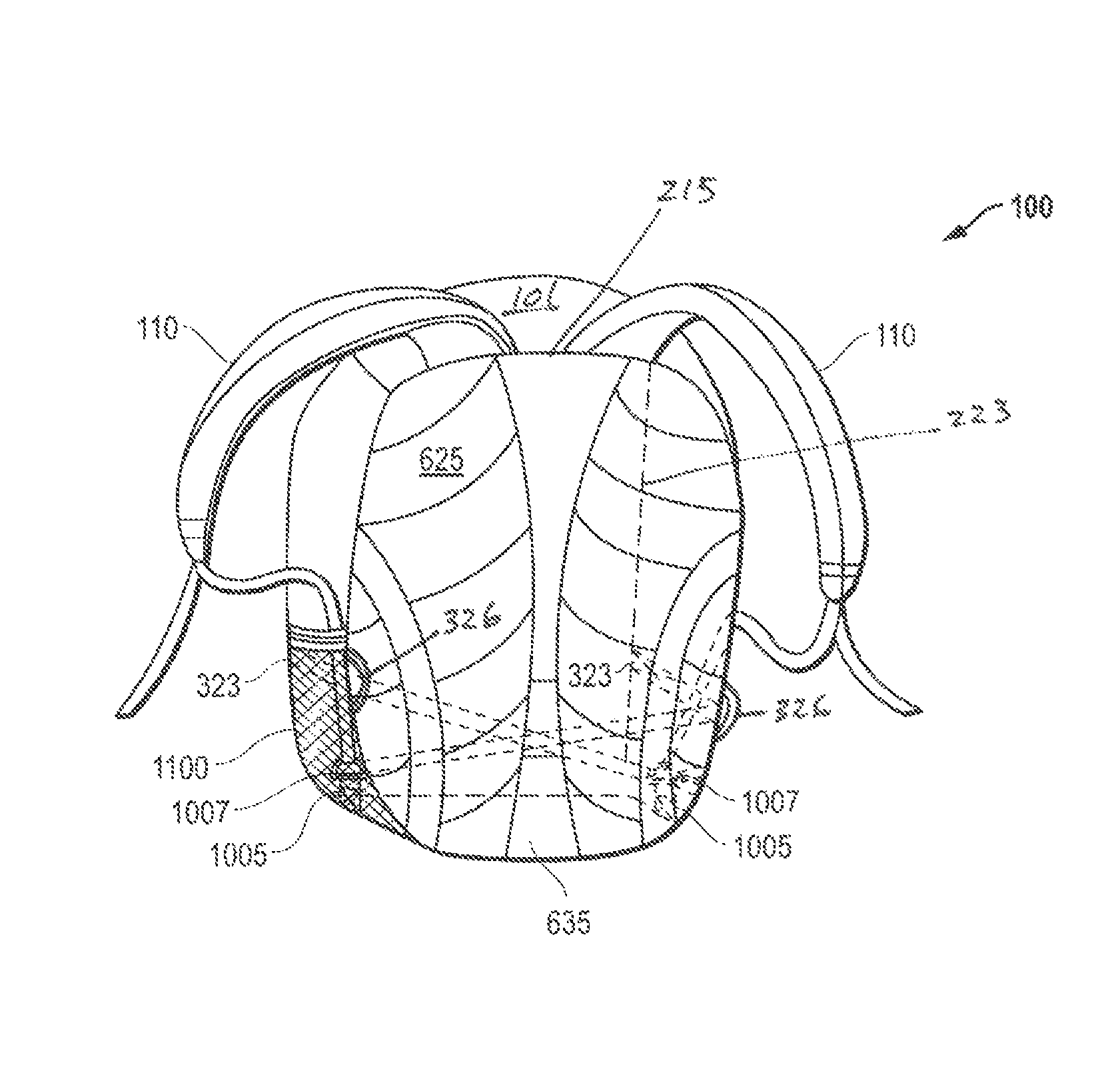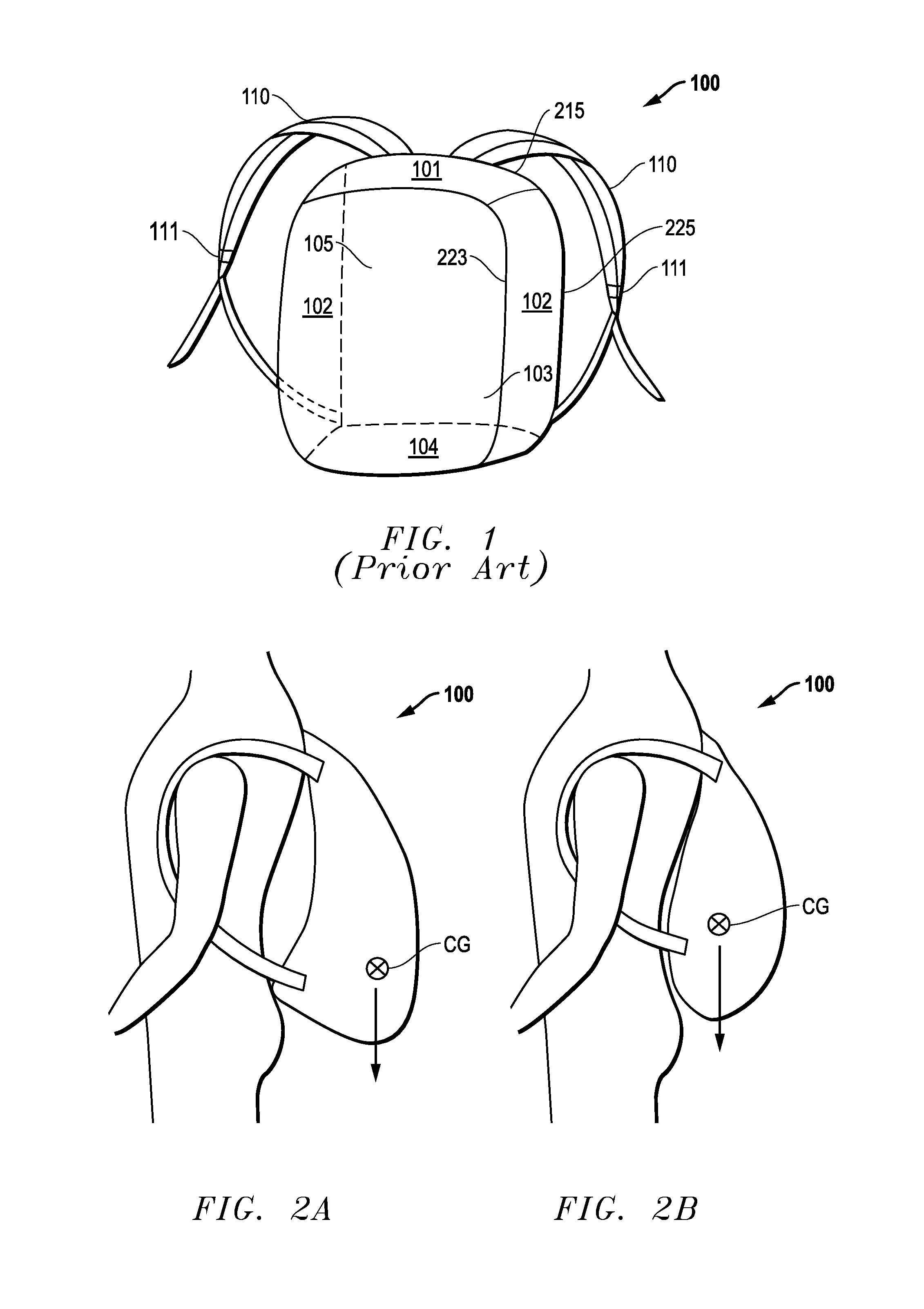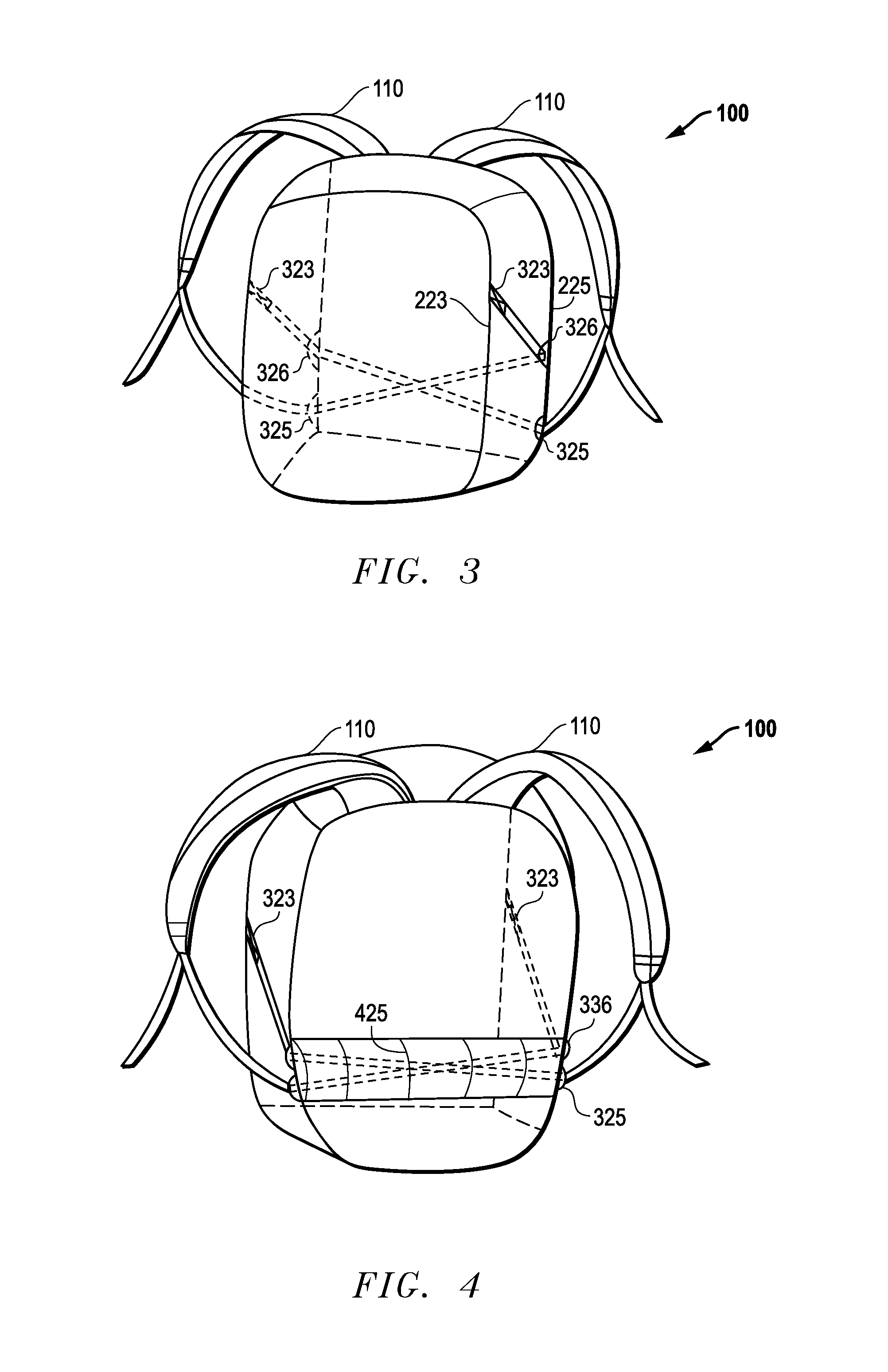Compression system for backpack
a compression system and backpack technology, applied in the field of backpacks, can solve the problems of user's lower back discomfort, body damage, and inability to carry heavy loads, and achieve the effect of reducing the sagging effect of backpacks
- Summary
- Abstract
- Description
- Claims
- Application Information
AI Technical Summary
Benefits of technology
Problems solved by technology
Method used
Image
Examples
Embodiment Construction
[0028]A conventional backpack body 100 of the prior art, shown in FIG. 1, is formed by a top side or region 101, two lateral sides or regions 102, an outer side or region 103, a body side or region 105, a bottom side 104 and a pair of shoulder straps 110. When connected, theses six sides or regions define an interior compartment called the body into which cargo such as books, food, etc. can be stowed. It is understood that this region may be subdivided into or complemented with a number of additional compartments or regions for keeping various items separate. Separating the two sides or regions are junctions or seams. Three junctions used later in the text are defined. The first junction 215 is defined between the top side 101 and the body side 105. The second junction 223 is defined between the lateral side 102 and the outer side 103. The third junction 225 is defined between the lateral side 102 and the body side 105. The defined junctions help readers in understanding the relativ...
PUM
 Login to View More
Login to View More Abstract
Description
Claims
Application Information
 Login to View More
Login to View More - R&D
- Intellectual Property
- Life Sciences
- Materials
- Tech Scout
- Unparalleled Data Quality
- Higher Quality Content
- 60% Fewer Hallucinations
Browse by: Latest US Patents, China's latest patents, Technical Efficacy Thesaurus, Application Domain, Technology Topic, Popular Technical Reports.
© 2025 PatSnap. All rights reserved.Legal|Privacy policy|Modern Slavery Act Transparency Statement|Sitemap|About US| Contact US: help@patsnap.com



